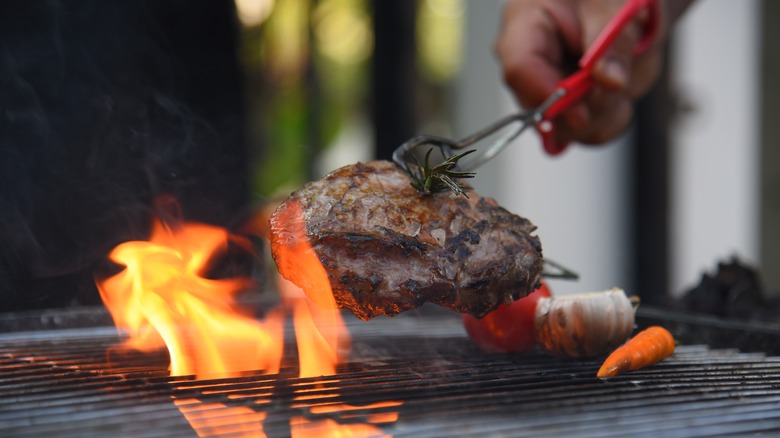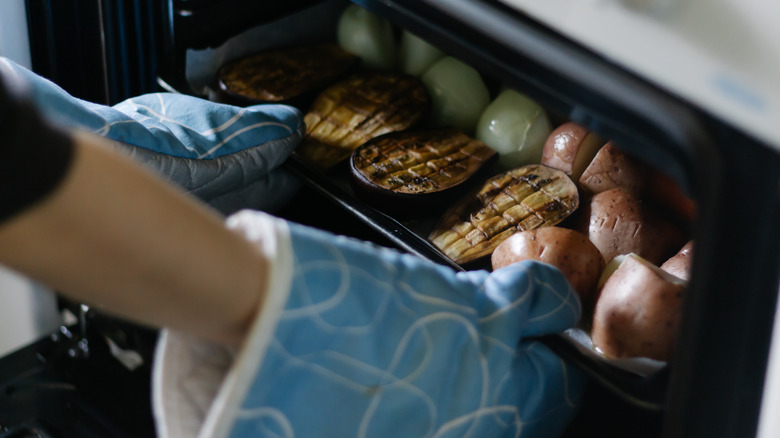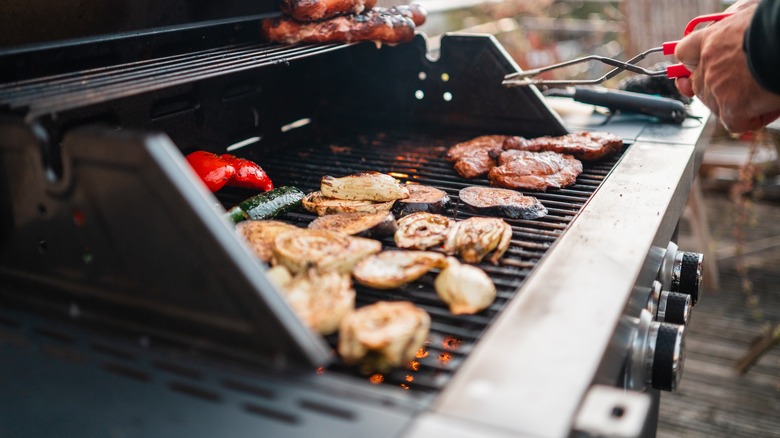Broiling Vs Grilling: What's The Difference?
Grilling and broiling are both methods of cooking using direct heat at high temperatures to achieve a delicious seared exterior on meats and veggies. But what are the differences between the two cooking techniques? And what are the benefits of choosing one over the other?
The clearest difference between grilling and broiling is the directionality of the heat source. Both use an open flame, but a grill's flame cooks food from below while broilers cook from above. This can have an impact on the flavor, especially for meats, as the juices that aren't absorbed by the protein drip into the flames, which helps to impart that desirable smokiness that's so valued in barbecue. Broiling creates a Maillard reaction (not to be confused with caramelization) in its own right, but broiled meats will lack some of that signature smokiness and char.
Cook times can also be a differentiator between grilling and broiling. It's not recommended to broil for over 10 minutes, as there's a heightened fire risk given the lessened temperature control. For foods that have a longer cooking time than 10 minutes, broiling is best used solely to finish off the cooking process for a beautiful crust.
Helpful tips for broiling
Now that you know the main differences between grilling and broiling, there are some important things to remember when choosing to broil. One of the mistakes everyone makes with a broiler is choosing the wrong type of pan and not preheating it in the oven. Using the wrong pan can have effects ranging from soggy food to grease fires. Make sure the material is up for the task: Don't use glass, which can shatter under the heat of 500 degrees Fahrenheit, and avoid anything non-stick, which can emit harmful chemicals when heated. Cast iron can handle the temperature, but without the drainage of a proper broiling pan, the meat will sit in the fats and juices, which will make the food grease-logged and risk the fats catching fire.
Another key to perfecting your broiling technique is leaving the oven door open an inch or two to keep consistent airflow and ensure the oven doesn't turn itself off, which some do once they hit a certain temperature. If you have a gas oven, check the model first to see if this method is safe for you. Because of the limited cooking times in broiling, it's better to save thicker cuts of meat for the grill. Chicken breasts, which have a medium-high heat index, for example, would be better suited to the grill unless you cut it in half before broiling. Thinner steaks, pork chops, seafood (even clams!) and veggies are ideal foods for broiling.
Helpful tips for grilling
For the grillers out there, here are a few tips to ensure you keep your title as grill master of your social circle. First and foremost, preheat your grill, not only for the coveted charlines but also to ensure that your food flips cleanly without losing its crust. Also, consider using a two-fire zone, especially when cooking steaks. Set one side hotter than the other and start the steaks on high, direct heat before moving them over to the cooler side to finish over indirect heat. This gives your steaks a beautiful char on the outside while the inside cooks gently to that perfect level of doneness.
Another good practice: Spring for a meat thermometer. This is not only to avoid undercooking but also to give you the confidence to avoid overcooking your meats, which World Champion pitmaster Chris Lilly says is one of the most common mistakes among grilling hobbyists. And don't forget to let your meats rest for about half the time it took to cook it.
Finally, don't be afraid to get creative out there! Grills aren't just the province of hot dogs and asparagus. A well-oiled whole fish, stone fruit, or even a grilled summer salad can give your meals a unique twist and a delicious, rich flavor.



